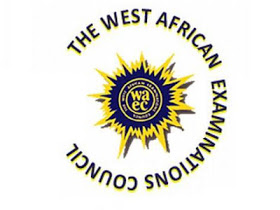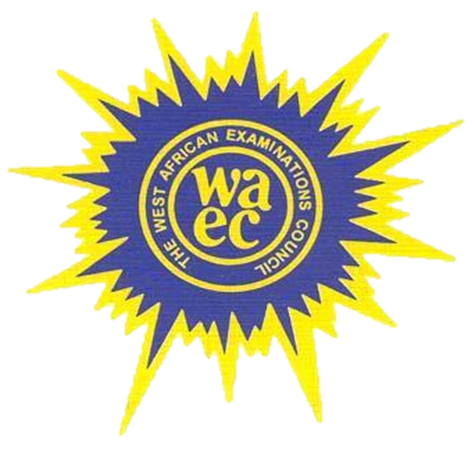Waec GCE 2017 Economics Obj And Essay Answer – Nov/Dec Expo
WELCOME TO AYOSTUFFS GCE ECONOMICS PORTAL
+++++++++++++++++++++++++++++++++++
REFRESH THIS PAGE EVERY 5MIN
++++++++++++++++++++++++++++++++
*SECTION A*
*YOU ARE TO ANSWERS ONE QUESTION IN THIS SECTION*
================
ECONS OBJ:
1BBACBBBDAD
11DCBCCDACB-
21DABBABDBCB
31ABAADADBDD
41CBDCBBBCAD
============================
1a)
Mu=Tu2-Tu1/Q2-Q1
11=p-14/2-1
11=p-14/1
P-14=11
p=11+14
P=25unit
Mu3=Tu3-Tu2/Q3-Q2
Q=34-25/3-2
Q=9unit
Mu5=Tu5-Tu4/Q5-Q4
S=43-R/5-4
S=43-R
S=43-40
S=3unit
Mu4=Tu4-Tu3/Q4-Q3
6=R-34/4-3
R-34=6
R=6+34
=40unit
1bi)
at the point where the marginal ultility reaches zero ie: where the mu curve cuts the x-axis total ultility reaches it maximum point this is the saturation point.
The point of the 6th unit where marginal ultility is zero is significant
1bii)
the economic law illustrated in the marginal ultilited in the marginal ultility colunm is the law of disminshing marginal ultility which state that the satisfaction derive from consuming successive units of a commodity will be the total comsumption of the commodity increases
1ci)
if the cone if ice cost $3.00
the equilibrium condition of consumer is
Muc=pc
3=3
1cii)
the number of he consumes to attain equilibrium is 5cones
=====================
2ai)
Fixed cost = 100
*Reason*:
Total fixed cost = Total cost – Total variable cost
*At output level 4,*
Total fixed cost = 340 – (60×4)
Total fixed cost = 340 – 240 = *100*
2aii) *At output level 2,*
Total cost = Total fixed cost + Total variable cost
P = 100 + (2 × 60)
P = 100 + 120
P = 220
*At output level 5,*
Total cost = Total fixed cost + Total variable cost
Q = 100 + (5 × 70)
Q = 100 + 350
Q = 450
*At output level 1,*
Total variable cost = Total cost – Total fixed Cost
(R × 1) = 190 – 100
R = 90
*At output level 3,*
Total variable cost = Total cost – Total fixed Cost
(S × 3) = 250 – 100
3S = 150
S = 150/3
S = 50
*Marginal cost(level 2) = Total cost(level 2) – Total cost(level 1)*
T = P – 190
T = 220 – 190
T = 30
b)
i) Decreasing: Levels 1, 2 and 3
ii) Increasing: Levels 4 and 5
c)
The relationship between the average variable cost plotted on the vertical axis and the marginal cost on the horizontal axis is a curve which slopes downwards and then gradually rises upward
================
*SECTION B*
*YOU ARE TO ANSWERS THREE FROM THIS SECTION*
3a)
joint venture is a commercial enterprise undertaken jointly by two or more parties which otherwise retain their distinct identities.
3b)
A public company is a minimum of two shareholders and shareholders own the company and receive profits.
WHILE
in a public corporation, there is government ownership and government receives any profit.
3c)
- Internally generated revenue: This is known as the profit made from the already existing businesses, they get finance from revenue generated internally
- Grant from foreign countries : Countries like United State of America can help in granting loans or financial aids to set up public corporation
- Grant from international financial institution : Public corporation can also get their finance from some international financial institutions like international Monetary Fund ( I. M. F)
- Loan and Overdraft : Public corporation can also obtain loans and Overdrafts from commercial or development banks
====================
5a)
Money is any item or verifiable record that is generally accepted as payment for goods and services and repayment of depts in a particular country or socio-economic context.
5b)
-portability
-divisibility
-limited supply
5c)
- Transaction demand: The amount of money needed to cover the needs of an individual, firm, or nation. That is, transaction demand for money is a measure of how much of a certaincurrency people need in order to buy the goods andservices they use.
- Precautionary demand is the demandfor financial assets, such as securities, money or foreign currency; it is money people hold in case of emergency.
- Speculative demand: is the demand for financial assets, such as securities, money, or foreign currency, that is not dictated by real transactions such as trade or financing.
==================
6a)
Central Bank can be defined as a national bank that provides financial and banking services for its country's government and commercial banking system, as well as implementing the government's monetary policy and issuing currency.
6b)
- Open-Market Operations: is by far the most important. By buying or selling government securities (usually bonds), the Fed—or a central bank—affects the money supply and interest rates.
- The Discount Rate: is the interest rate at which the Fed (or a central bank) lends to commercial banks. An increase in the discount rate reduces the amount of lending made by banks.
- Reserve Requirements: Commercial banks by law hold a specific percentage of their deposits and required reserves with the Fed (or a central bank). These are held either in the form of non-interest-bearing reserves or as cash.
6c)
- Provide safety and security: Insurance provide financial support and reduce uncertainties in business and human life. It provides safety and security against particular event.
- Generates financial resources: Insurance generate funds by collecting premium. These funds are invested in government securities and stock.
- Life insurance encourages savings: Insurance does not only protect against risks and uncertainties, but also provides an investment channel too. Life insurance enables systematic savings due to payment of regular premium. Life insurance provides a mode of investment.
===============
8a)
International trade is the exchange of capital, goods, and services acrossinternational borders or territories. It is the exchange of goods and services among nations of the world. In most countries, such trade represents a significant share of gross domestic product (GDP).
8b)
- Embargo: is a government order that restricts commerce or exchange with a specified country or the exchange of specific goods. An embargo is usually created as a result of unfavorable political or economic circumstances between nations.
-Quota: is a government-imposed trade restriction that limits the number, or monetary value, of goods that can be imported or exported during a particular time period. Quotas are used in international trade to help regulate the volume of trade between countries.
-Tariff br /> a schedule of duties imposed by agovernment on imported or in some countriesexported goods
ANSWERS LOADING...... STAY ONLINE
INVITE YOUR FRIENDS TO OUR WEBSITE




Comments
Post a Comment